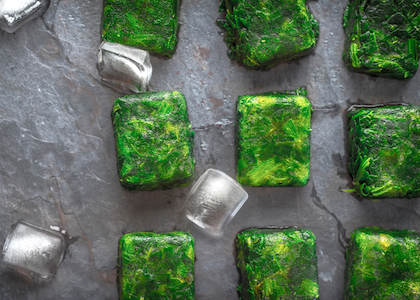
What to Do with Produce for Delicious Juices All Year
By Claire Georgiou, Reboot Naturopath, B.HSc ND
Certain times of the year bring an overabundance of fresh produce, with everything cheap, delicious and readily available. That’s the perfect time to freeze fruits and vegetables! Freezing is a great, budget-friendly way to consume colorful healthy produce all year round. The frozen produce you purchase in your grocery store is often imported – that means the growing environment and conditions could be questionable and the pesticides used could be harmful and even banned in other countries. When you store and freeze produce yourself, then you can be 100 percent certain of its handling and care.
This weekend, I plan to freeze some of my fruits and vegetables as I have a fridge full of fresh organic produce and I’m going away for a week of skiing. This way, I can chuck it in the freezer before I leave for vacation, instead of throwing it in the trash.
How to Freeze Produce
Prep produce as soon as possible. Wash fruits and vegetables in cold water, then trim, peel and chop them to the desired size. Store produce in air-tight containers or freezer bags that seal moisture in and keep air out.You can use glass containers, stainless steel, plastic, silicone, freezer bags and waxed freezer paper for storage. I recommend glass for anything acidic. To reduce browning on fruits that are prone to discoloration, squeeze fresh lemon juice, which acts as a natural preservative.
Label your fruit and vegetables before freezing, and include the date, too. Otherwise, items become mysterious.
Produce that freezes well whole: Berries (raspberries, strawberries, blueberries, blackberries, currants, cranberries), bananas, chili peppers, beans, asparagus, tomatoes, and corn.
Produce that freezes well chopped or halved: Bell peppers (capsicum), avocado, mango, pineapple, melon, peas, carrots, broccoli, cauliflower, stone fruits (peaches, nectarines, plums, cherries), apples, pears, summer squash and winter squash.
Most produce freezes well, although some with a high water content such as celery, lettuce and cucumber may because a little soggy. Even that can still be used for juices and other meals where it will be cooked in.
Freeze shredded vegetables, too: Zucchini, carrot, sweet potato and potato freeze well shredded and can be used in hash browns, frittatas, pies and casseroles.
But these are only suggestions — anything can be chopped and prepared according to your future planned use for recipes, juices or smoothie making.
Another useful tip is to freeze fruits and vegetables in single layers — that way, they’ll thaw easily and you can break off what you want. Tip: Place produce on a lined tray with baking paper. Stick it into the freezer, and once the veggies or fruits are frozen, store them in containers.
Use ice cube trays: These can be great to add to smoothies or meals to add extra nutrition. You can blend produce in enough water to blend and store as ice cubes.
Freeze Your Juices
You can also freeze your juices in jars to consume at later periods. We often recommend consuming these within 10 days but you can easily consume juices beyond this period while still absorbing and enjoying the nutrients along with the flavor.
Here’s more information on how to store juices.
Create Smoothie or Juice Packs
You can collect all your produce for a juice or smoothie recipe, then wash, trim and chop to the desired size and store into separate freezer bags. Take it out and blend or juice without thinking about it at all! Easy! It is advisable to allow fruits and vegetables to thaw mostly for the most effective juicing.
Freeze Vegetables for Your Plant-Based Meals
If you are freezing vegetables for meals, it is a good idea to blanch them lightly. Blanching helps to stabilize the color, flavor and texture. Here’s how to blanch vegetables: Bring a large pot of water to boil and add prepared vegetables to the water. Once the water returns to a boil, cook the vegetables 1-2 minutes, then remove the vegetables from the boiling water with a slotted spoon and transfer them immediately to a bowl of ice water until they are completely chilled. Drain the vegetables well, then store in containers or bags and into the freezer.
Note: Fruits and vegetables prepared this way can be stored for up to one year.